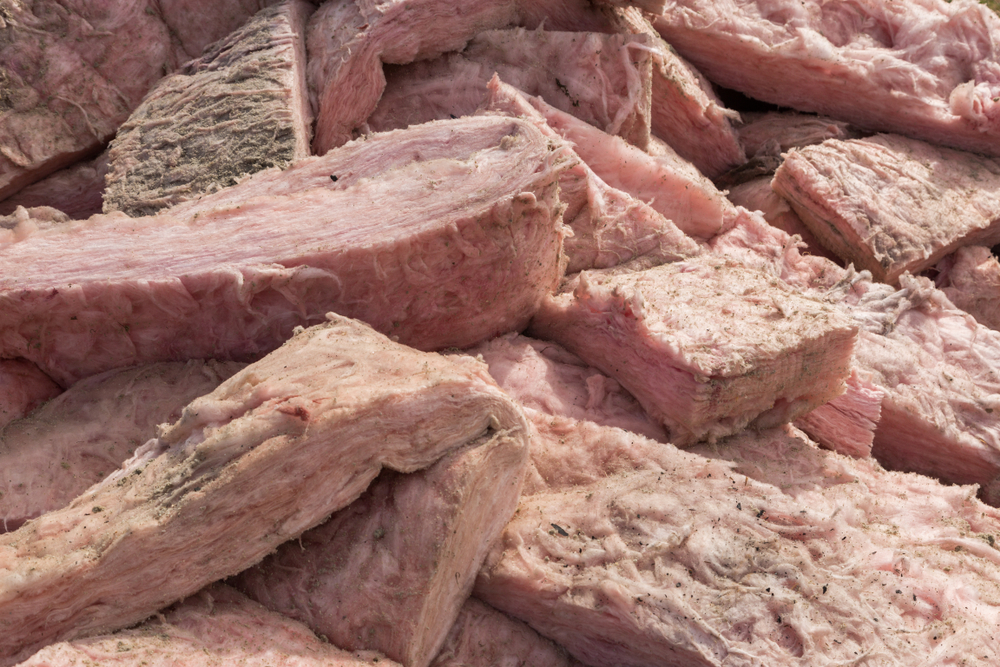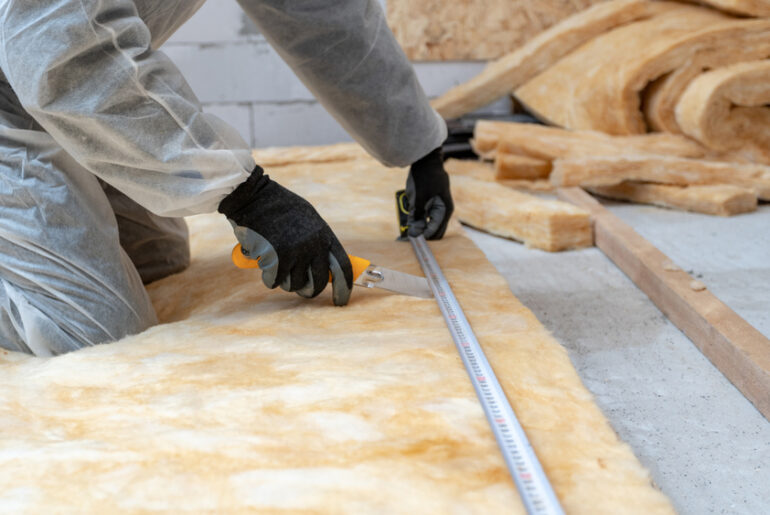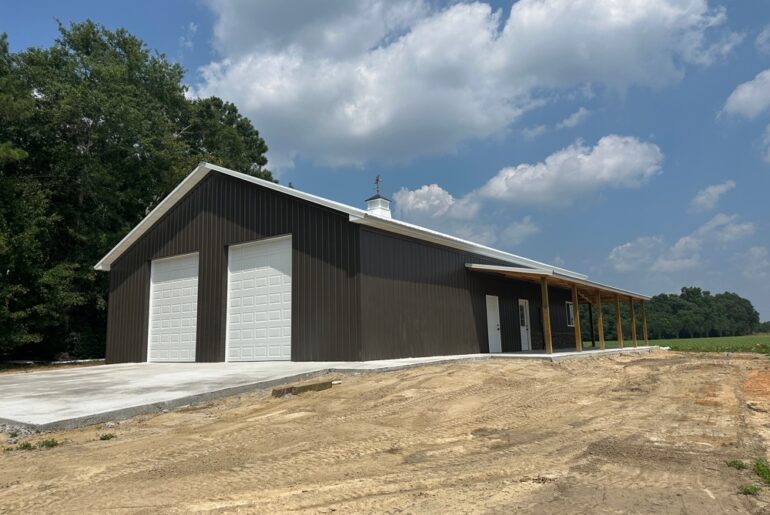Fiberglass insulation is one of the most popular insulation materials for residential and commercial applications. And if you’re planning to replace your existing fiberglass insulation at home, you might be wondering about the proper and legal way of fiberglass insulation disposal.
If you do decide to remove and dispose of your old fiberglass insulation, it’s crucial to adhere to proper safety protocols to keep you and your house safe.
In order to dispose of fiberglass waste safely, here are the things you need to keep in mind.
Disclaimer: when dealing with exposed fiberglass insulation, safety should be your top priority. If you’re not sure how to dispose of fiberglass insulation yourself, contact professionals.
Why Can’t Fiberglass Insulation Be Just Thrown In The Garbage?
Fiberglass insulation cannot just be thrown in the garbage because of the following reasons.
Exposed Fiberglass is Dangerous
Exposed fiberglass is dangerous as it can release airborne fibers into the air. Inhalation or direct contact with these fibers can cause irritation to the throat, skin, eyes, and nose. Other symptoms that may occur include wheezing, itching, or coughing.
Long-term exposure to damaged fiberglass insulation can also cause rashes that happen when the fiberglass dust or fragments from the insulation embeds into the skin’s outer layer. Symptoms of fiberglass rash include dry, flaky skin with small, red blisters. The fibers may also protrude from the skin’s surface when it gets stuck. However, it’s important to note that fiberglass dermatitis is usually temporary.
Moreover, high exposure to airborne fiberglass or fibers may harm the respiratory system and worsen breathing ailments like asthma or bronchitis-like conditions. This is because bits of fiberglass can get stuck in a person’s nose, throat, or even lungs, causing difficulty breathing. It can also lead to lung injuries, especially when long fibers were inhaled. Remember that fiberglass insulation is made of molten glass blown into fibers.
Lastly, fiberglass emits styrene, a known synthetic material known as a carcinogen, according to the Environmental Protection Agency (EPA). A carcinogen is a substance capable of causing cancer, especially when exposed for longer periods. Although there are still ongoing studies about its effect, and there’s limited evidence, it’s best to steer clear of exposed fiberglass insulation to prevent such cases.
There Are Local Waste Authority Guidelines
Because fiberglass insulation is semi-hazardous, you must follow your local waste authority guidelines or country waste management department. You can’t just throw it away in the garbage because you have to know the correct way of fiberglass insulation disposal and the specialized disposal site. Therefore, it’s best to contact your local waste authority, as they are the ones to provide you with this information.
Also, if you improperly dispose of the damaged fiberglass insulation, you might have to pay a costlier fine or even undergo possible legal consequences due to improper disposal of fiberglass waste.
Fiberglass Insulation Can Be Recycled
Instead of only disposing of them in the garbage, fiberglass insulation can be recycled instead. This can be a more sustainable or eco-friendly (greener) approach than always disposal. Fiberglass insulation can be made into acoustic or thermal insulation.
Does The Type of Fiberglass Insulation Affect The Disposal Process?
There are three fiberglass insulation types: rolls/batts, blown-in (loose-fill), and board.
Rolls/batts fiberglass insulation, also known as blanket insulation, is the most commonly seen and used fiberglass insulation. It’s made of thin fiberglass fibers, has different thicknesses, and is often sold in rolls or pre-cut into long pieces or industry panel sizes. You can remove and dispose of the rolls/batts fiberglass insulation yourself at the specialized disposal site.
Blown-in fiberglass insulation, also known as loose-fill insulation, is another standard fiberglass insulation type. It’s made of tiny, loose glass fibers with styrofoam pellets or cellulose materials. It’s installed using an insulation blower to fill hard-to-reach or uneven spaces, such as cavities, wall studs, pipes, or attic floors. Moreover, blow-in fiberglass insulation is distinguished by its granular, fluffy, or loose, lumpy texture and form. Due to its complexity, disposal of blown-in (loose-fill) fiberglass insulation will require a professional using industrial-strength vacuuming to remove them.
Board fiberglass insulation is another type of fiberglass insulation. It is commonly made of polyurethane foam reinforced with inorganic or synthetic fiberglass. It utilizes a thermosetting resin that forms the fiberglass into rigid, semi-rigid, or flexible boards with varying densities. Like Blown-in fiberglass insulation, a professional must dispose of board fiberglass insulation properly.
Overall, the type of fiberglass insulation does affect the disposal of fiberglass waste. Again, contacting your local waste authority is best because each type of fiberglass insulation requires a specialized disposal process. This will help you prevent fines or legal consequences.
Tip: How Do I Make Sure It’s Fiberglass I’m Trying to Dispose of?
Fiberglass insulation is made of molten glass spun into fine glass fibers and then coated with a liquid binder, commonly resin. Some of the basic raw materials of fiberglass insulation include soda ash, silica sand, and limestone.
You can identify that your insulation is fiberglass insulation by checking its appearance, which is supposedly fluffy or soft and cotton-like. It also has a slight shine since it’s made of fine glass fibers when exposed to bright light.
Now, to the fiberglass insulation disposal process itself…
Here’s what you need to do:
Step 1. Exercise Safety
Before the removal and disposal of fiberglass waste, gathering all the tools and equipment you need for an easier and smoother process is best. One of the most important things is to equip yourself with safety gear, such as an old long sleeve shirt, headgear, thick working gloves, and long pants that you can discard after the disposal. This will serve as your body covering to minimize or fully prevent any contact with fiberglass insulation, as contact with skin can cause irritation or rash.
Wearing safety goggles and a dust mask is also important because exposed fiberglass releases glass fibers into the air, which can cause wheezing, coughing, or difficulty breathing, especially when inhaled. Inhaling fiberglass can lead to even more dangerous breathing issues and permanent lung damage. In addition, it’s best to ventilate the area before and while removing and disposing of the fiberglass insulation by opening all available doors and windows to allow the air out to avoid fibers gathering in a closed space.
Proper ventilation is important because you need to ensure you won’t be exposed to the glass fibers or fiberglass dust in the air for too long. It will also allow good air circulation to prevent you from inhaling the airborne fibers that could get stuck in your nose, throat, or lungs and even cause difficulty breathing.
Avoid rubbing if you get glass fibers, dust, or any debris on your eyes or skin. If irritation persists, don’t panic and avoid rubbing the affected area even more as it can spread the fiberglass and irritate the skin more. Instead, thoroughly wash the affected area with water and mild soap, flushing it for 15 minutes.
Step 2. Remove the Fiberglass Insulation
Use a hammer or flathead screw driver’s claw end to remove the staples that hold the insulation between the wall studs, removing them from the bottom and working upwards. Remove the top staples last, so the fiberglass insulation doesn’t fall. After that, slowly roll the fiberglass insulation down the wall and then tuck it in on itself to prevent stirring up dust.
Step 3. Bag it Up
After rolling the fiberglass insulation, it’s time to bag it up. The best bag to use is contractor bags, which are trash bags that are extra thick for enhanced durability and strength. You can also double bag them, which means using two bags to contain and ensure none of the fiberglass insulation contents will seep out. The best way of double-bagging is to place one empty contractor bag into the other.
After filling the bag with rolled fiberglass insulation, tie them shut at the neck tightly. This will keep any loose fiberglass dust or fibers from escaping into the air during transportation. Once each contractor bag is packed and sealed, clear them from the work area to avoid spreading the fiberglass dust. Remember to handle them carefully to prevent rupturing the bags.
Step 4. Clean the Disposal room
After bagging them, don’t forget to sweep up or vacuum all loose fiberglass insulation dust or debris to prevent the spread of excess fiberglass dust in your house.
Step 4. Contact Your Local Waste Authority
You can’t simply dispose of the fiberglass insulation in the trash bin. It’s important to contact your local waste authority to know the best fiberglass insulation disposal method in your area. Personnel will also direct you to the nearest specialized disposal site. Make sure to follow your local waste authority’s exact fiberglass insulation disposal instructions and go to the specific location the personnel referred you to. This way, you will avoid paying penalties or getting into legal consequences.
Can Fiberglass Be Recycled?
Before, fiberglass was almost impossible to recycle, but with recent improvements in recycling techniques, it is now recyclable. However, some factors, such as the fiberglass’s condition, cost, and recycling facilities in your area, can affect it if it’s impossible.
Fiberglass insulation is also recyclable and can be made into thermal or acoustic insulation material. You can recycle your old insulation in local recycling facilities, municipal waste disposal facilities, local solid waste authorities, or The National Insulation Association recycling facilities.
It’s important to note that if your fiberglass is dirty, it won’t be accepted as it’s considered garbage.
What To Do With Leftover Fiberglass Insulation?
What you can do to leftover fiberglass insulation is to use them as additional insulation for fully functional rooms. For example, you can cut or batt them into smaller pieces and use them for insulating around objects or smaller spaces that need filling. You can also use it on piping and air ducts for extra insulation to control the temperature and reduce freezing.
In addition, you can use the leftover fiberglass insulation as a seamless soundproofing barrier for your studio, home office, or gym. Fiberglass foam insulation is also suitable for garage walls. Do this by attaching the leftover fiberglass insulation to the walls or ceilings of your chosen space. This will provide added insulation and absorb the sound or noise instead of only blocking it.
You can even use it as an extra cushion and warmth for your dogs if you have a kennel. Do this by attaching the leftover fiberglass insulation to the kennel’s floor and boarding it up to prevent it from being torn back. You can even attach it to the kennel’s walls or roof for added insulation.
Can You Resell Old Fiberglass Insulation?
You can resell your old fiberglass insulation, but it must still be in good condition even if it’s only one year old.





